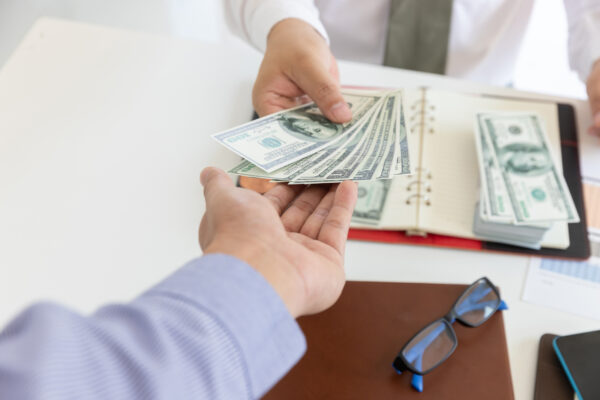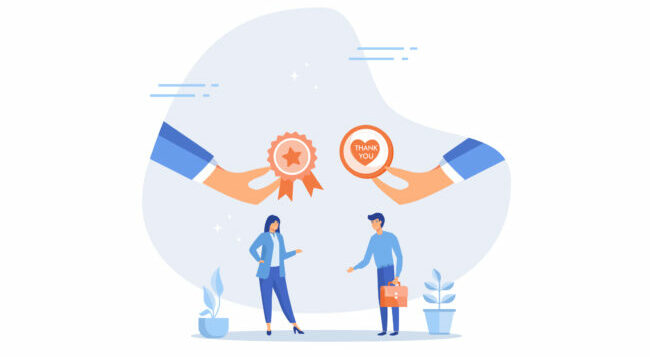There are inevitably “right ways” and “wrong ways” to handle pretty much everything in this thing called life. Employee recognition in your business is no exception.
The “right ways” will undoubtedly reap measurable benefits, improving not only your metrics, but also your employee experience and company culture as well.
On the flip side, the mistakes that companies make in their recognition systems can be devastating to the business. The negative effects can spread like a sickness through the work community, infecting one employee at a time.
Symptoms of recognition faux pas may include:
-
- ⭐️ Increased dissatisfaction within your workforce
- ⭐️ A nosedive in employee engagement
- ⭐️ Retention rates that have your competitors salivating to poach your top performers
But why exactly is recognition so important in the workplace?
Because people want to feel valued, dang it!
Sure, you appreciate your employees. They’re great! But to be clear, employee appreciation and employee recognition are not actually interchangeable terms.
Whether you opt for hand-written notes to quietly show that you see them, or a big flashy display of public recognition so the rest of the workforce sees them, impactful employees deserve their shout-outs.
If we’re being totally honest, there are probably a few thousand ways to mess up your employee recognition incentives.
But, if you’re ready to rock it in 2023, and really show your employees you care about them, avoiding these 15 common mistakes will give you the edge you need to start strong and maintain an effective employee recognition program your team members will line up to get on board with.
Tip! Are you looking to learn more about employee personalities?
In just a few minutes, you can Take the FREE assessment here and unlock insights into the types of recognition that matter most to you (and your team).
With RecognitionDNA, you can stop wasting $$$ rewarding employees in ways that don’t matter, and start recognizing them in ways they will actually care about.
15 Common Mistakes In Employee Recognition Programs
1) Lack of communication between the company and staff
This could essentially be considered the opposite of micromanaging. A lack of communication is equally toxic to your company culture and creates a massive gap between the various levels of your workforce.
Not to mention that if there’s no communication, there’s clearly no awareness of the employees’ struggles, milestones, and successes. How can you support your employees and recognize their efforts if you haven’t learned anything about them?
Tip! Transparency is key! Effective company surveys can help you get a handle on what your workforce wants to know so they can feel more comfortable in their work environment and better understand where the company is headed.
2) Not utilizing milestones and holidays
These are big-deal moments that deserve a celebratory calendar slot. Milestones can only be reached through time and dedication. By not recognizing them, you’re sending a message that their investments (aka time and dedication) don’t matter. As for holidays, they don’t change. Same day or date, every single year. It’s seriously not difficult and the return on investment is definitely in your favor.
Tip! An effective recognition software can track these monumental milestones and important holidays so you don’t have to. Once you collect the data and plug it in, you can sit back and wait for the reminders and give yourself plenty of time to find the perfect recognition gift for the occasion.
3) Playing favorites and ignoring employees who need extra support
It’s great to have those ideal employees who just “get it.” They slide into their roles with confidence and a sense of direction and independence that makes it easy to find reasons to recognize their talents. Others, however, require a bit more guidance and direction. These folks could in fact prove to be your most powerful assets in a few months. Don’t discount their contributions because they’re less bold or things don’t come to them as easily as the others.
Tip! Don’t dish out your kudos all willy-nilly or just when you think someone’s done something “big enough.” Keeping your recognition and employee rewards consistent across the workforce evens the playing field for everyone.
4) Sticking to the same outdated recognition program
“If it ain’t broke, don’t fix it” is a great philosophy if you want to fall way behind in this conversation. Even if your recognition program isn’t broke, it certainly could be antique, which is still equally ineffective. Finding new ways to acknowledge your employees gives them brand new motivation to go that extra mile the next time an opportunity arises.
Tip! There are so many platforms available to help keep your recognition variety fresh and encouraging. Shop around and check out the free trials until you find one that best fits your business and your employees.
5) Focusing only on performance
It’s easy to see that performance = productivity = profit. But developing your employees and ensuring people are in roles where they can thrive actually makes them capable of performing at a higher level, therefore being more productive, and ultimately, increases the bottom line (aka profits). Both options boost your earnings, but nurturing and supporting your employees gets you there quicker and with even better results.
Tip! Get to know your employees. Find out where they shine, what they’re passionate about, where they want to go. Simply feed those goals and everybody wins!
6) No personalization
Get personal with your employees! Ok, not too personal, but definitely get personalized. This can mean finding out what hobbies they’re into and customizing their recognition around that theme. Or making sure every screen in the building shows a photo and a reminder to wish Erika a “happy birthday” today. It’s all about them!
Tip! Know your audience. A company-wide survey can tell you a lot about your employees and offer valuable information for personalizing their recognition and their rewards.
7) Giving every employee the same reward
Ball caps and bumper stickers aren’t working anymore (did they ever?). Handing out the same generic rewards to every person, for every occasion, year after year is really another way to define insanity. The rewards and recognition you dish should make people feel seen for what they actually do. A one-size-fits-all gift card just says, “Here… found this in my desk drawer. Congrats!”
Tip! Many recognition programs offer super fun and customizable options for all your milestones, holidays, bah mitzvahs, baby showers, retirements, you name it. It’s not hard to find something uniquely “them.”
8) Not using an employee recognition tool
It’s true that a recognition tool isn’t a genie in a bottle. It won’t miraculously cure all that ails your workforce but it’s a huge step in the right direction. Choosing the right recognition tool and getting buy-in from your employees is 90% of the battle. Your consistency in promoting and utilizing the tool will determine the final 10%.
Tip! The internet is an infinite universe of resources. Get your Google on and find out what tools and platforms are out there so you can start testing them with your employees.
9) Letting the program fade into the background
There’s nothing worse than a lack of engagement in a recognition program, especially from the top down. Management initiates an elaborate plan, with a big launch party, and everyone focuses on the shiny new object. Then after a few months… crickets. Maybe a rogue chirp here and there, but a lack of consistency and commitment will have your program faceplanting in record time.
Tip! Realistically, it takes 59-70 days to create a new habit. Maintaining a consistent promotion plan for your recognition program builds momentum, allowing time for the positive impact to become ingrained in the culture.
10) Only using money as a recognition tool
They say that “cash is King,” but cash as recognition is like throwing a can of fix-a-flat in a tire after running over a row of nails. It’ll keep things rolling for a little while, but the breakdown is inevitable. People already work for their paycheck so cash has no actual connection to accomplishments. There are a gazillion other ways to effectively recognize and reward your employees other than dead presidents.
Tip! It’s not all about the dolla dolla bill, y’all! Considering options like public acknowledgment, team lunches, self-care bundles, experiential gift cards, and peer-to-peer recognition can blow the doors wide open on your employee engagement and overall productivity.
11) No feedback from employees
How does that work? Newsflash – it doesn’t! You can’t possibly offer authentic, effective recognition if you don’t know what that looks like to your employees.
Not everyone feels appreciated in the same ways or by the same rewards, so spending a little time learning makes a big difference all around.
Tip! Poll your audience. No one’s going to tell you what’s working and what’s not better than the people in the trenches. Let your employees tell you how to improve their employee experience and boost morale.
12) Fear of trying new things
Glass half full, people! Thomas Edison didn’t fail 1000 times when trying to invent the lightbulb. He simply discovered 1000 ways that didn’t work… until ONE did. Run a series of pilots with your employees so they can get a feel for what they like best. You won’t know if something works until you try. And keep trying until ONE does.
Tip! So many recognition platforms offer free trials. Use them – you have nothing to lose! Try them all on! See how they fit before committing and have some fun with it.
13) Only giving rewards and recognition every once in a while
Consistency builds trust. In all directions.
When your employees consistently show up and do great work, you trust they’ll continue to do so. But what’s so enticing about that for them when they only feel appreciated randomly and inconsistently? Where’s their motivation to remain consistent?
Tip! The top three rules of recognition are:
- Be specific about why you’re recognizing the person
- Make the recognition personal to the receiver
- Do. It. Often.
14) Not encouraging peer-to-peer recognition
BREAKING NEWS! Management is not solely responsible for recognition! You read that right. It’s not all about collecting accolades from the people in corner offices on high floors (you know… the ones they rarely even see). Lateral gratitude lets employees share their appreciation for and with one another, creating a cycle of appreciation and improving the entire company culture.
Tip! Check into some of the amazing recognition programs available that support peer-to-peer props and empower your employees with positivity.
15) Providing recognition that is too small or insignificant
Remember the days when you’d get excited about collecting and flaunting a Bic pen with your company name on it? No? Yea, we don’t either. Insignificant recognition leads to insignificant effort. Reaping the rewards of recognition requires making an investment in the actual types of recognition you dish out.
Tip! You get back what you put in, so make sure your recognition matches your employees’ efforts. If they’re giving you their best, don’t they deserve the same from you?
Conclusion
The Harvard Business Review determined that, while recognition and appreciation can often seem to be one and the same, the main differences to remember are “recognition is about what people do; appreciation is about who they are.”
They go on to explain that recognition “is about giving positive feedback based on results or performance.”
So it’s praising them for the things they do. It’s acknowledging the hard work they put into a big project. It’s honoring their tangible efforts with meaningful words and/or actions.
Before we wrap up, there’s one last point to make. Let’s not ignore the benefits employee recognition brings to interoffice relationships. Trust is built through consistency and authenticity. When leadership takes the position that the employees are the company’s most valuable asset, their employees feel that. Employee engagement is stronger. The connections are deeper. The collaborations are bolder. The whole vibe is empowering!
Building trust in the leadership of an organization with an effective rewards program reinforces the company values, creates a workplace culture of recognition, and ensures that each employee’s contributions are valued.
All of these tips positively impact employee morale and that’s what drives a healthy culture and creates a committed workforce.
Employee Recognition Mistakes: Frequently Asked Questions
Q: What are the challenges of employee recognition?
- A: Some challenges of employee recognition may be the initial engagement and participation, especially if you’ve tried before but allowed the program to fizzle out. Employees need to trust their leadership to maintain and promote these kinds of implementations for long-term use. Once they see commitment and stability, their participation is much more likely.
Q: What are the most common mistakes that companies make when recognizing employees?
- A: The most common employee recognition mistakes that companies make when recognizing employees are being inconsistent and impersonal. Offering universal, even somewhat generic recognition makes zero personal impact on an employee. Add in the randomness of inconsistency, and your employees really have no clear goals to work towards.
Q: Are there any mistakes I should avoid when building out an employee recognition program?
- A: Some mistakes you should avoid when building out an employee recognition program are:
▶︎ Don’t assume everyone finds value in the same type of recognition.
▶︎ Don’t assume employees “just know” they’re appreciated.
▶︎ Don’t assume you know what people need to feel valued – ask them.
▶︎ Don’t assume that showing recognition is only for the Leadership team.
▶︎ Don’t assume.















